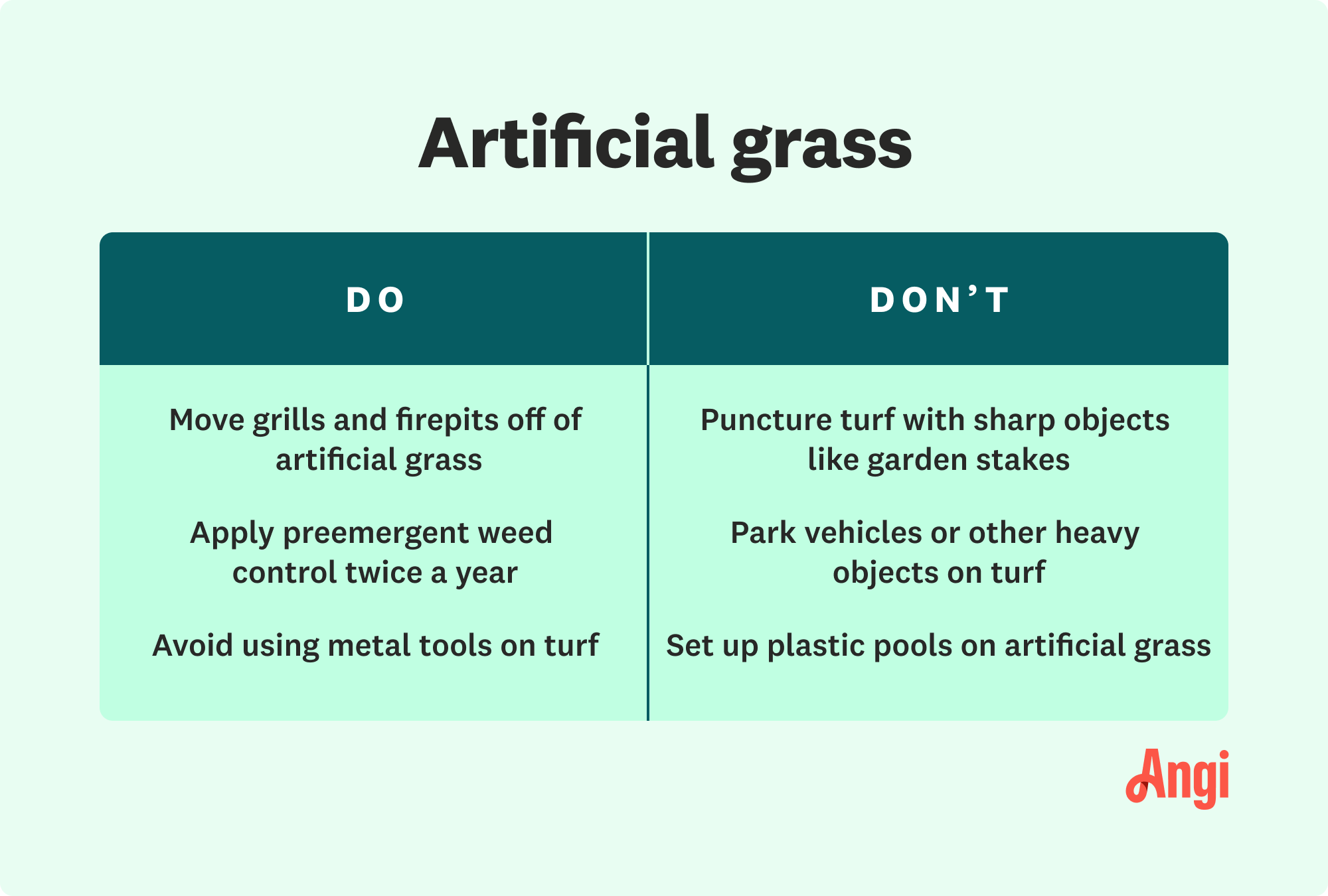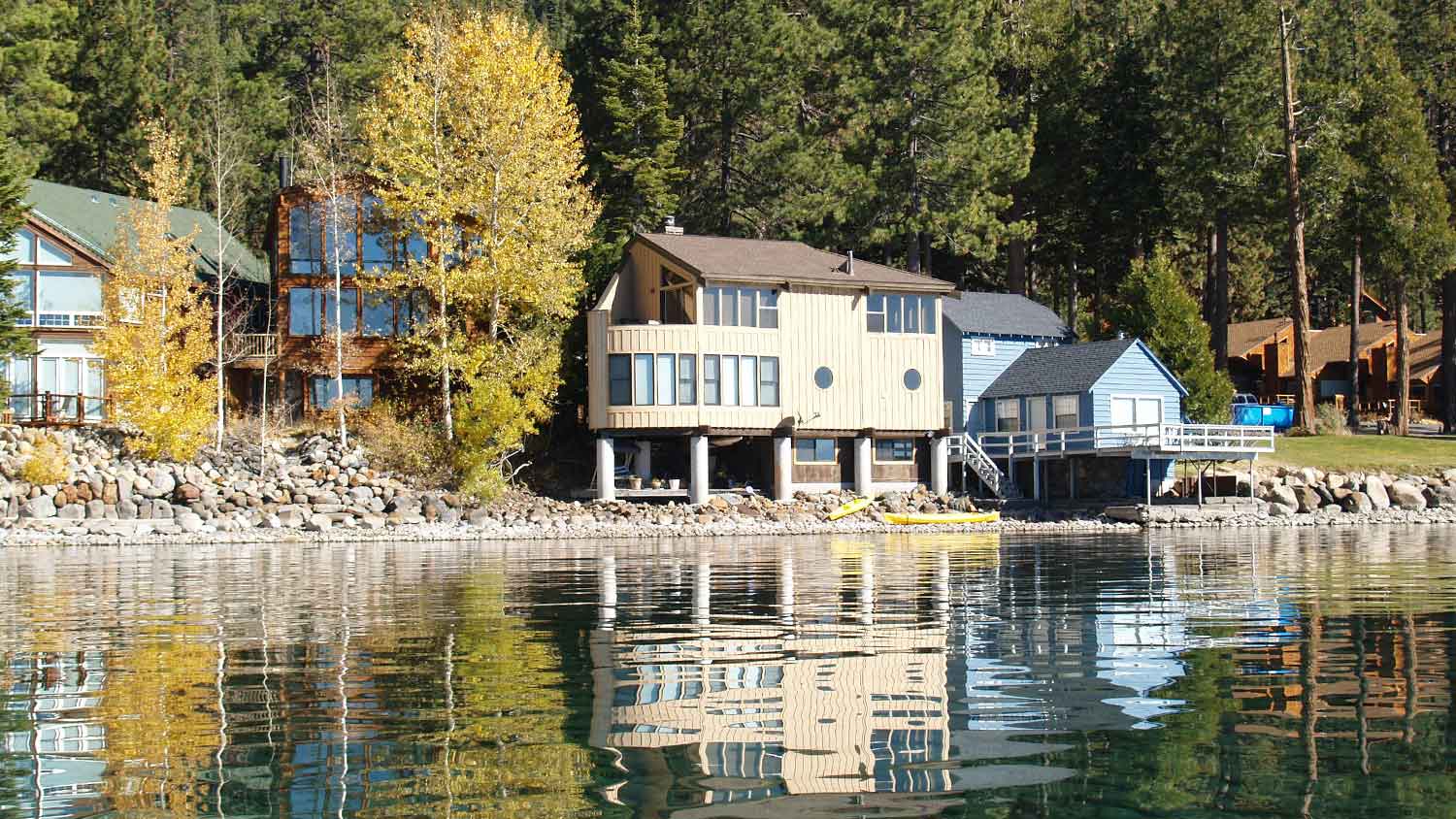
A landscape designer can elevate your outdoor space and bring your vision to life. Use this landscape design cost guide to budget for your next project.
With the right care, your turf lawn can be the envy of the neighborhood


Artificial grass is a great landscaping option for homeowners who want to avoid the constant upkeep of a natural grass lawn. While it requires less maintenance than a traditional lawn, some artificial grass maintenance is needed to keep turf lawns looking their best for as long as possible. Learn how to maintain artificial grass with these eight easy tips.
Leaves, branches, and other organic debris can trap moisture, decay, and damage your turf over time. Keep debris from settling on your artificial grass by using a leaf blower, broom, or plastic rake, or remove debris by hand. Light debris, like small amounts of leaves or dropped blooms, can often be removed by a hose. Try to remove debris as soon as you notice it to reduce the risk of turf damage.
If your pets use your artificial grass to do their business, be sure to clean up after them in a timely manner. Solid pet waste is easiest to remove after it has dried and can easily be picked up with a plastic bag. Pet urine will eventually drain through the turf but can produce a strong odor if left to dry, so rinse off urine patches with a hose before they have a chance to dry and settle into the turf mat.
Even without pet messes to worry about, your turf will need periodic cleanings to keep it free of dirt, spills, wildlife debris, pollen, and more. Once a week, hose down your artificial grass to rinse off any surface material that may have settled on the turf and to keep odors from developing. If needed, use a broom or plastic rake to remove any larger debris that may have settled.
If your turf has accumulated stains that don’t rinse away with the hose, you can spot-treat these areas as needed. Using water, a mild cleaner like dish soap, and a sponge or soft-bristled brush, gently scrub at the stain until it lifts. For solid stains, gently scrape with a plastic scraper to dislodge solid material. For stubborn solid stains, apply mineral spirits to a cloth, then dab at the stain. If using mineral spirits, be sure to wear gloves and a respirator, avoid saturating the turf with the spirits, and rinse well once done.
One of the problems with artificial grass is that because it is made of synthetic materials, it’s more susceptible to damage from intense heat. Make sure to keep any reflective surfaces like glass decorations in shady areas where they won’t concentrate light beams onto the turf. Keep firepits and grills far enough from artificial grass so hot embers and sparks won’t land on your turf and damage it.
Over time, artificial grass can get flattened or matted with use. Brushing the blades in the opposite direction can perk your turf back up and keep it looking fresh. Using a plastic brush with turf-safe bristles, brush any flat spots using the least amount of pressure possible to avoid damaging the blades or the turf’s mat.

Even if you keep up with your artificial grass maintenance, turf in high-traffic areas may need to be replaced sooner than the rest of your lawn. A local turf installation pro can help you replace worn or damaged sections of turf without having to incur the cost of replacing all of your turf. This is a cost-effective way to make sure your whole yard stays looking its best.

Artificial grass is weed-resistant, but weeds can and do still grow on turf lawns. Fortunately, weeds in most types of artificial grass are often not deep-rooted, so they can easily be pulled by hand. Avoid using digging tools to remove weeds, as they can damage the turf. You can also spray weeds with a mixture of vinegar and water, which will kill the weeds without harming your yard. In heavily weed-prone areas, a preemergent weed treatment can be applied to reduce weed growth over a longer period.
You can keep your artificial grass in great condition with only a few tools and supplies. To maintain your turf, you need the following:
Plastic or rubber turf brush
Plastic rake
Leaf blower
Garden hose
Nylon-bristled scrub brush
Heavy-duty sponge
From average costs to expert advice, get all the answers you need to get your job done.

A landscape designer can elevate your outdoor space and bring your vision to life. Use this landscape design cost guide to budget for your next project.

Leveling your yard can help with drainage and prevent damage to your home. Learn the cost to level a yard in Columbus, OH, and what factors can affect the price.

Ivy might look pretty, but you probably don’t want it in your garden. Learn how much it’ll cost to remove ivy by type, treatment method, and more.

Stone wall garden beds add flair and natural beauty to your outdoor living spaces. Learn how to make a stone wall garden bed with this six-step guide on building a retaining wall.

Riprap prevents erosion and protects your shoreline when done right. Learn who to hire for riprap and how to find a licensed professional.

Discover how to remove hedges from your yard safely and effectively when changing the landscaping or eliminating diseased specimens.